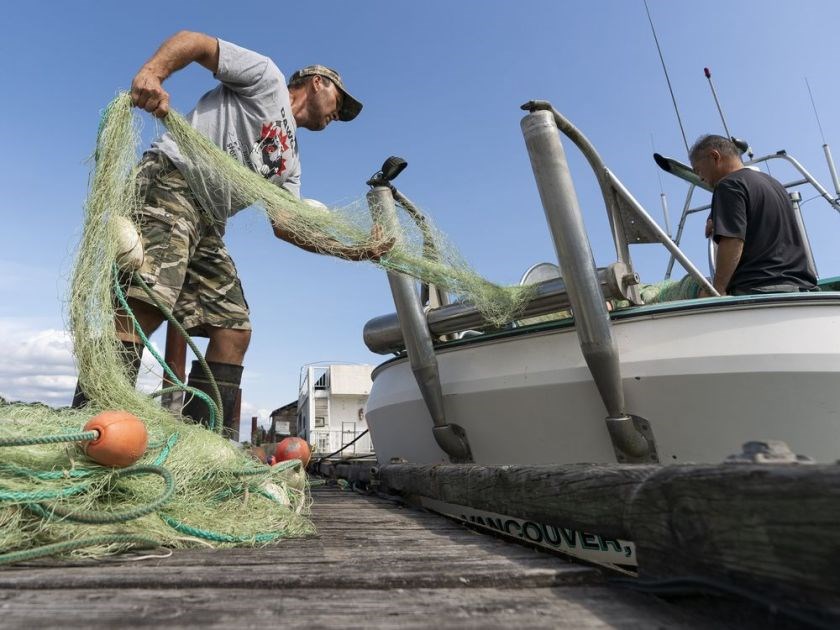sa���ʴ�ý commercial salmon fishermen are waiting for pre-season forecasts due next month after 2019 delivered the lowest returns on record for prized Fraser River sockeye.
Last year also brought in sweeping fishing restrictions for Fraser River chinook because of fears for their survival and for the endangered southern resident killer whales, which depend on that species as their main source of food.
As well, in June, massive chunks of rock sheared off a cliff at Big Bar, crashed into the Fraser River and blocked spawning salmon. That led to a rescue operation to transport as many fish around the barricade as possible.
Federal Fisheries Minister Bernadette Jordan said last week that construction is starting soon to clear the river while water levels are low.
“This is a very difficult time for the resource and for those who depend and rely upon the resource,” Dane Chauvel, chairman of the sa���ʴ�ý Salmon Marketing Council, said Monday.
The council represents fishermen and related industries in the wild salmon sector.
“There’s not a lot to be optimistic about in the near-term,” said Chauvel.
This is not the time to despair, he said. “It’s the time to get together and figure this out and do what we can to recover.”
Chauvel is encouraged about the longer term, noting, for example, that Fisheries and Oceans is staging a meeting on Friday in Vancouver of all sectors working on the recovery of south-coast chinook.
Everyone is working collaboratively to come up with solutions, he said.
But between now and any recovery, there will be lean periods and there’s no reason to expect bumper runs in 2020, said Chauvel, who is a troller fisherman on the coast.
It’s too early to know for sure, but after last year, which Chauvel described as horrible, “everybody’s kind of hunkered down anticipating 2020 may be another year very much like the last.”
The near-term is going to be difficult for coastal communities depending on fisheries.
This needs to be explored with the fisheries minister, Chauvel said. “What are you going to do to support the fishermen, the communities and the infrastructure that depend upon the fisheries while we are working a recovery plan?”
If fisheries infrastructure disappears, it will be difficult to bring it and its related expertise back, Chauvel said.
“I think that’s the big issue right now.”
There were just 485,900 sockeye returning to the Fraser River year last year — down from the pre-season forecast of 4,795,900, said Fiona Martens, who is chief of fisheries management programs for the Pacific Salmon Commission.
That body is a joint sa���ʴ�ý-U.S. organization charged with implementing the Pacific Salmon Treaty.
Last year’s Fraser River sockeye returns were the lowest since estimates began in 1893, she said. A preliminary forecast for this year’s Fraser River sockeye will be available in late February, Martens said.
As for other sa���ʴ�ý salmon runs, preliminary reports through Fisheries and Oceans sa���ʴ�ý are not yet available.
Forecasts are normally finalized for the start of consultations for the integrated fisheries management plans, usually in early February, said a Fisheries and Oceans official.
On a more positive note, Fraser River pink salmon did better than expected, with a run size of 8,858,200 last season, beating the pre-season forecast of 5,018,600.



